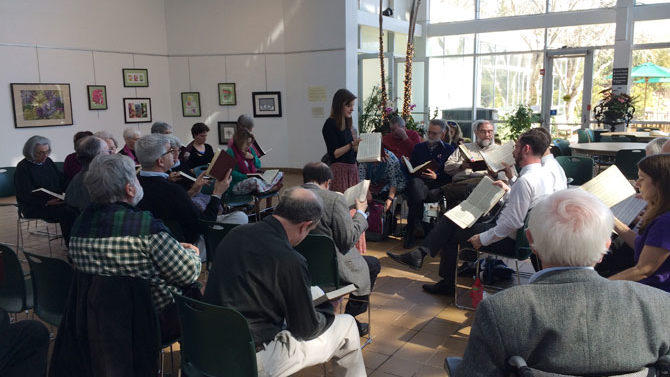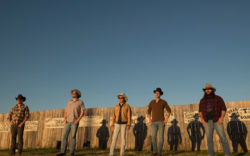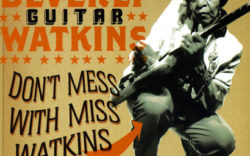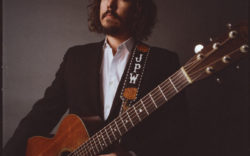Modern participants in shape-note singing, an a capella form of worship music that dates back at least to the 1840s, typically discover the tradition though academic research interests or regional family ties.
“The fact that it’s been preserved and passed down as an active tradition for so many years is something that academics have found fascinating,” says Joanna Smolko, a music professor at UGA and Athens Technical College. “Also, there’s been times that, through writing about the book, writing about traditions or through participating in it, academics have worked hand-in-hand with local singers to help preserve documents.”
It’s no surprise that Athens, a vibrant college town surrounded on all sides by tight-knit rural communities, has a rich history of shape-note singings advanced by scholars, students and the families that have kept the tradition alive and well for generations.
The tradition assigns shapes to musical notes in songs about the Christian faith. Prevalent hymnal The Sacred Harp utilizes “fa,” “sol,” “la” and “mi.” The syllable assigned to each shape is sung through once, setting the pace and tone that will be replicated when participants sing the lyrics. Tenor, bass, alto and treble singers sit facing each other, creating what’s called a “hollow square” formation. Anyone, from first-timers to members of established shape-note families, can pick and lead a song.
“It’s not a performance,” says John Hollingsworth, a retired UGA math professor. “It’s participatory worship, so that’s the way we gear it. If people come, we want them to sing.”
This simple, stirring and democratic form of worship can be found in Athens at least once a month. The “Teenth Tuesday” singing from The Sacred Harp, held on the Tuesday that falls between the 13th–19th each month, is marked by Christian fellowship and hospitality. It’s folk music crossed with old-time religion, featuring songs that might have otherwise been lost to time and potluck snacking inspired by the traditional Southern “dinner on the ground.” All that’s seemingly missing is an old country church—the singing is held in the home of local singer Shannon Primm.
Smolko’s PhD dissertation focused on the impact of shape-note hymns on 20th Century composers. Her continued research on the topic finds that shape-note singings were regularly mentioned in local newspapers between the 1840s–1920s, when the tradition seemingly faded away, until the folk revival of the 1960s triggered its ongoing resurgence.
Local research interest in shape-note singing began in the early 1970s. Longtime UGA chemistry professor John Garst aided in the 1973 republication of The Social Harp, a lesser-known shape-note hymnal compiled in the 1850s by Hart County singing teacher and farmer John McCurry. That same year, an annual February singing—now held at the State Botanical Garden—debuted. It remains the only annual singing anywhere that uses The Social Harp. The 1978 publication of Buell Cobb’s The Sacred Harp: A Tradition and Its Music by UGA Press furthered the role of Athens in recording shape-note singing’s past and ensuring its survival.
In 2017, shape-note singing represents more than preserved religious practices. These events revisit a secular society that valued music education and shared folk traditions.
“It can be daunting at first [for new singers], since there’s so many people who never sing in groups now,” Smolko says. “We’ve left so much of the music to professionals, especially as some schools start to cut their music programs.”
Many academics learn of shape-note singing during their time as students. Smolko, for instance, checked out a Botanical Garden singing as a graduate student at the behest of her Hugh Hodgson School of Music colleague Kevin Kelly. Hollingsworth also joined the local shape-note community at one of the Social Harp singings in 1973, but it was hardly his introduction to shape notes. Hollingsworth was continuing a lengthy family tradition he first encountered as a child in Mississippi, where he sang from the Christian Harmony hymnal.
“My grandfather on my mother’s side was born in 1870, and he was the leader in the shape-note singing in that county,” Hollingsworth says. “I suspect that he started singing very young.”
Hollingsworth lists four key draws for singers who become regulars at singings across the region, whether they were pointed to the tradition by family, academia or even popular culture, such as the 2003 film Cold Mountain.
“One thing, of course, is the fellowship,” Hollingsworth says. “One thing is the worship service. One thing is people enjoy being part of an old tradition. Then some of it is just the sound. We like the music. There’s four factors. All are important. For different people, different factors are more or less important. For me, all four are important.”
Each semester, new students arrive as potential practitioners of a sacred music tradition that’s practically unchanged since at least the mid-1840s. Whether they have been exposed to hometown singings or are complete novices, any of these students may be one moving performance or a new favorite hymn away from sharing regular fellowship and song with Smolko, Primm, Hollingsworth and other modern-day folklorists.
Anyone interested in the Teenth Tuesday singings can email Primm at [email protected]. For information on other local shape-note events, find the Athens, Georgia Sacred Harp group on Facebook.
Like what you just read? Support Flagpole by making a donation today. Every dollar you give helps fund our ongoing mission to provide Athens with quality, independent journalism.










